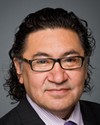Thank you, Madam Chair, and to our guests this afternoon.
I'm sorry, Kevin, that we shocked you. It wasn't intended, really.
Thank you for those presentations. I think all three testimonies were incredibly well expressed. I think it will help this committee in understanding what they're trying to do through this study and through Bill C-262.
First of all, I want to start by asking you a question, Sheryl.
In the Edwards case at the Supreme Court of Canada, in I believe 1984, I think it was one of the first occasions when the Supreme Court talked about the Constitution as “a living tree”. One of the reasons they said that back then was that for the framers of the Constitution, in particular with respect to section 35, not everything could have been predicted at that time. Not everything could have been imagined by the framers of the Constitution at that time. We have seen over the years with the rulings from the Supreme Court that our Constitution has grown, developed, and evolved, in particular with respect to the recognition and respect of indigenous peoples' rights.
Do you think the living tree doctrine applies also to the UN Declaration on the Rights of Indigenous Peoples?




